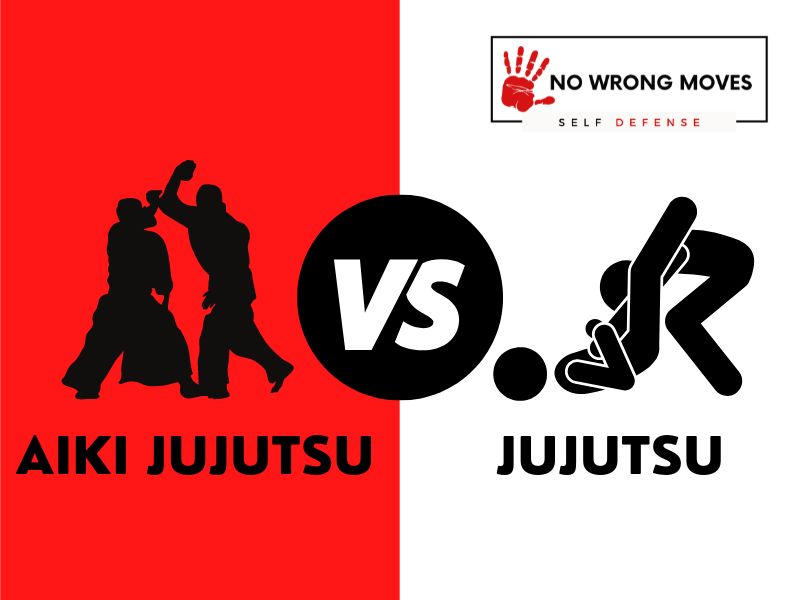
- What We Know About Aiki Jujutsu
- What We Know About Jujutsu
- Key Elements Of Aiki Jujutsu
- Key Elements Of Jujutsu
- Aiki Jujutsu Rankings & Levels
- Jujutsu Rankings & Levels
- Aiki Jujutsu Vs. Jujutsu Attire
- What A Typical Aiki Jujutsu Training Session Looks Like
- What A Typical Jujutsu Training Session Looks Like
- Aiki Jujutsu Movies
- Conclusion: Aiki Jujutsu Vs. Jujutsu
Today, we are going to end the long-standing debate of Aiki Jujutsu Vs. Jujutsu! People (especially those online) go back on forth on which discipline is better.
Some say that Aiki Jujutsu is more fluid and instinctive, while others argue that Jujutsu is more powerful and straightforward. So which is it, and why?
Well...
In many ways, Jujutsu derrives from Aiki Jujutsu, and both styles have similarities in their techniques and principles.
But there's a caveat: some argue that Aiki Jujutsu is the superior style because it focuses more on redirecting an attacker's energy and using minimal force, whereas traditional Jujutsu often relies on brute strength.
Another key difference between Aiki Jujutsu and Jujutsu is the emphasis on "aiki," or harmony and balance, in Aiki Jujutsu. This concept is integrated into all techniques and training, leading to a more efficient and effective style of self-defense.
At the end of it all, it's up you, the individual practitioner, to decide which style best suits your needs and preferences. Both Aiki Jujutsu and Jujutsu offer valuable self-defense skills, but Aiki Jujutsu may be a better option for you if you're seeking a more fluid and harmonious approach.
In any case, let's look at these two disciplines in more depth.
Once we've done that, you'll have the tools to decide for yourself...
What We Know About Aiki Jujutsu

Aiki Jujutsu is a martial art that involves harmonizing your own energy with that of your opponent in order to redirect it in a way that suits your needs.
Instead of meeting force head-on, Aiki Jujutsu practitioners use Kempo-Jutsu's striking and evasive techniques to position themselves close to their opponents. They then follow up with linear, diagonal, or circular movements to redirect the opponent's energy.
Throwing techniques in Aiki Jujutsu rely heavily on Kempo-Jutsu's Atemi. In some instances, a skilled practitioner can apply Aiki Jujutsu throwing techniques by blending with their opponent's energy.
Aiki Jujutsu can be traced back to the Takenouchi Hisamori's Shinmei-ryu school of swordsmanship, which he founded in the early 1600s.
His student, Takeda Sokaku, is credited with creating Aiki Jujutsu from the techniques he learned from Hisamori. Sokaku passed on his knowledge to his son, Takeda Tokimune, who then continued to develop and teach the art until his death in 1943.
The art was further refined by Morihei Ueshiba, who created Aikido, a modernized version of Aiki Jujutsu.
Even today, Aiki Jujutsu can be used for self-defense or as a form of physical and mental exercise. Its excellent teachings regarding control over one's body and mind have made it a staple in the martial arts community.
What We Know About Jujutsu
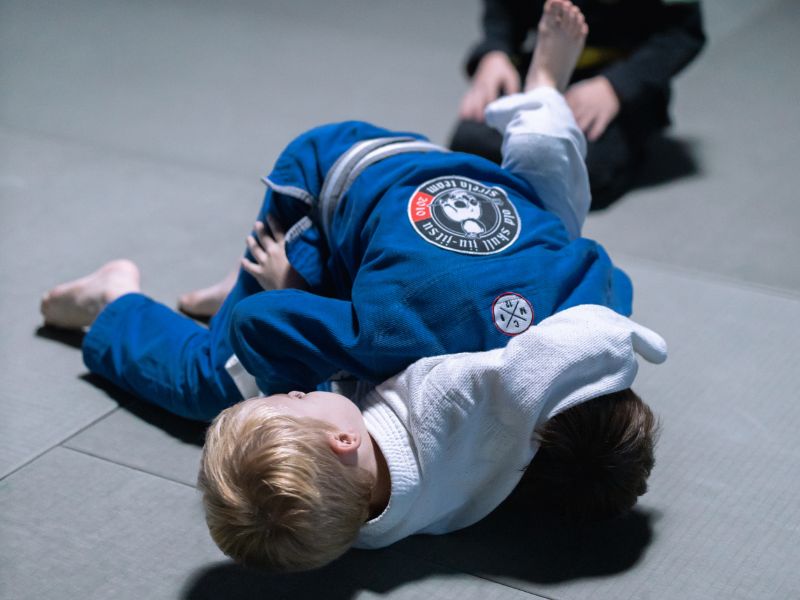
Jujutsu is a martial art that has its origins in feudal Japan. It is a versatile form of self-defense that can be used in both unarmed and armed combat. Translated literally, the word jujutsu means "the gentle art."
To the uninitiated, it's a strange thing to call a martial art, to be sure, but it's not without any reasonable basis. Jujutsu is primarily a close-quarters fighting style that utilizes grappling, joint locks, and throws to subdue an opponent.
Most of its maneuvers can be done without any fear of seriously harming an opponent, meaning it's a very safe martial art to learn overall. So the name makes sense in this case!
Jujutsu is also an ideal form of self-defense for women, who are often at a disadvantage when faced with a larger and stronger assailant. And in addition to its practical applications, jujutsu is also an excellent workout and can help to improve balance, coordination, and flexibility.
Of course, this is only a brief history and understanding of Aiki Jujutsu and Jujutsu, but if you want to go deeper into either art, be sure to check out the following posts:
Now, back to the comparison...
Let's look at the origins of the respective disciplines and then compare the key elements of their practices. You will be able to understand some of their similarities and differences a bit better afterward.
| Aiki Jujutsu | Jujutsu | |
| Origins | Japanese | Japanese |
Key Elements Of Aiki Jujutsu
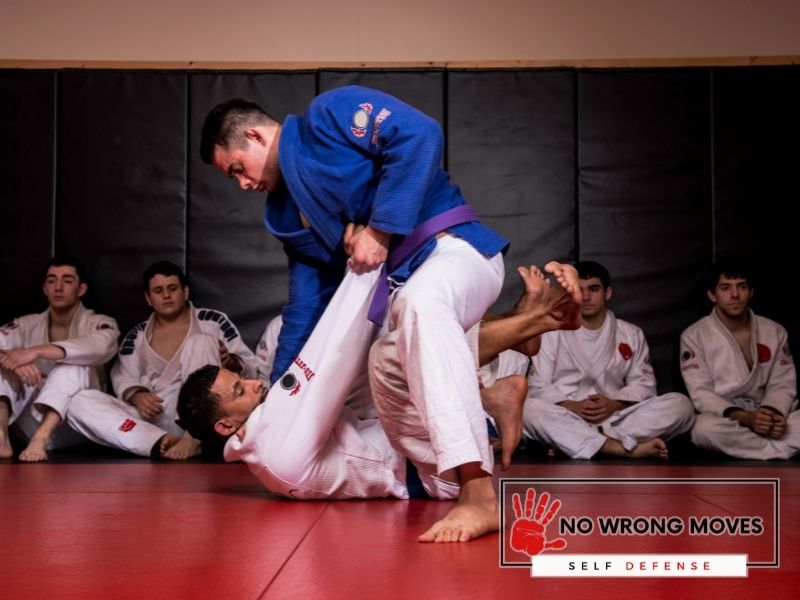
One of the fundamental principles in Aiki Jujutsu is the use of leverage and balance to gain an advantage over one's opponent. This involves the strategic application of force and momentum to manipulate an opponent's body, making it easier to control and overpower them.
Another essential component of Aiki Jujutsu is the use of body movement and positioning.
By carefully positioning one's body in relation to the opponent, a practitioner can create openings for attacks or defensive maneuvers. This requires a high degree of spatial awareness and precision in movement.
Joint locks and throws are powerful techniques that can be used to subdue an opponent quickly and efficiently.
These maneuvers involve applying pressure to a joint or manipulating an opponent's balance to throw them to the ground. They require a thorough understanding of anatomy and a high degree of technical skill.
One of the most advanced techniques in Aiki Jujutsu is the ability to blend with the motion of an attacker. This involves moving in a way that allows a practitioner to avoid incoming attacks while simultaneously positioning themselves to counterattack.
It requires an acute awareness of an opponent's movements and a high level of skill in evasive maneuvers.
Next, up here in Aiki Jujutsu is breath control. By learning to regulate their breathing, practitioners can maintain their focus and energy levels, even in the face of physical exertion and stress.
Mental focus and calmness in the face of adversity are critical traits for any Aiki Jujutsu practitioner.
And speaking from personal experience, if you're knee deep into a fight, you'll want to know how to maintain a clear head and a calm demeanor, even in the face of obvious danger.
This requires mental fortitude and the ability to stay focused under pressure, the kind that Aiki Jujutsu will teach you.
Finally, one of the most powerful parts of this martial art is its ability to use an attacker's energy against them.
By skillfully redirecting an opponent's momentum, a practitioner can use their strength and force to overpower them. Of course, this requires a deep understanding of the techniques and a high degree of technical skill--which, trust me, your training will be able to give you in spades.
Key Elements Of Jujutsu
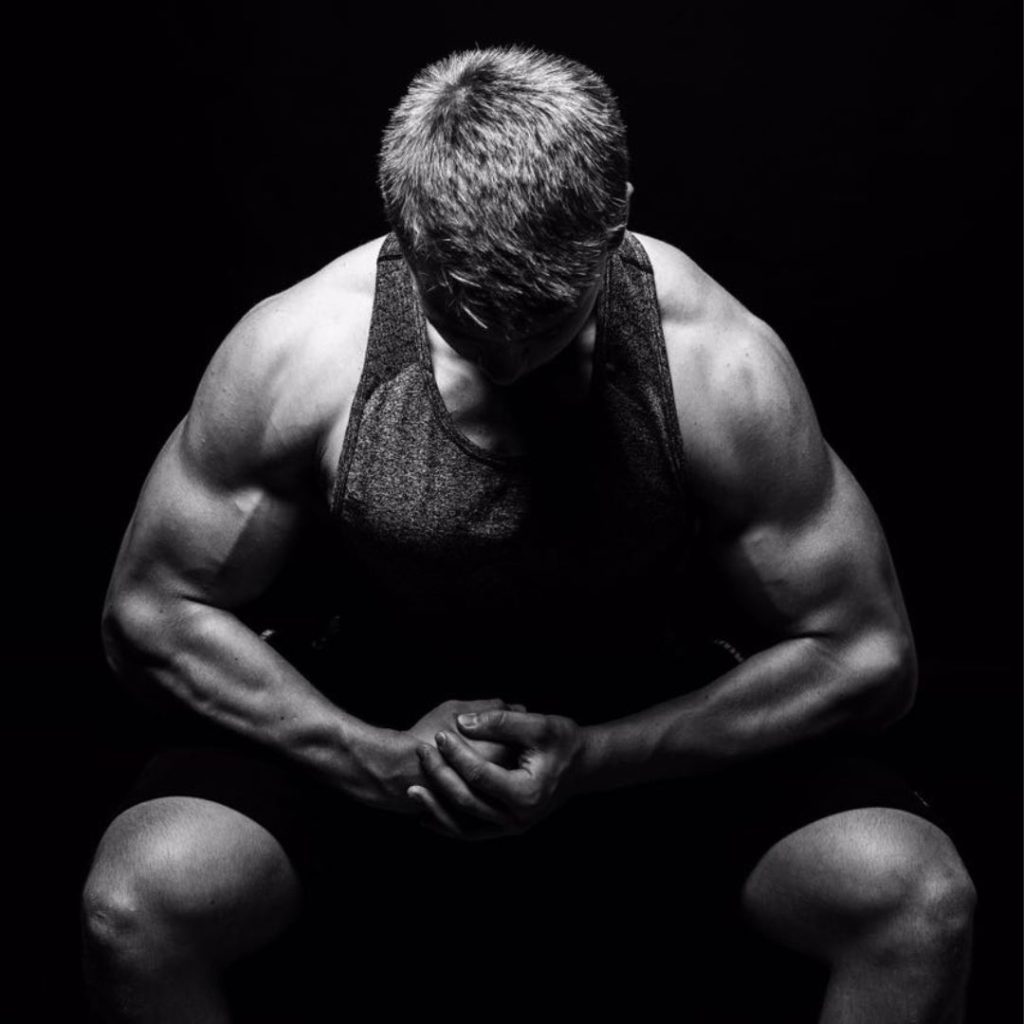
Jujutsu is a martial art that incorporates a wide range of techniques, including joint locks, throws, striking, chokes, strangles, and groundwork.
Joint locks involve manipulating an opponent's joints to cause pain or restrict their movement. Throws involve using leverage and momentum to unbalance an opponent and take them to the ground.
Striking includes punches, kicks, and other strikes that can be used to defend against an attacker. Chokes and strangles involve applying pressure to an opponent's neck to render them unconscious or cause them to tap out.
And finally, groundwork involves fighting... well, on the ground, which is an extraordinarily crucial aspect of Jujutsu.
One of the most important aspects of Jujutsu is its emphasis on technique over brute strength. Unlike some other martial arts, Jujutsu focuses on using an opponent's strength and momentum against them.
This means that smaller or weaker individuals can still defend themselves effectively against larger and stronger attackers.
Jujutsu also emphasizes the importance of controlling an opponent rather than simply overpowering them. This allows practitioners to neutralize an attacker without causing serious harm.
Another key component of Jujutsu is its focus on self-defense. Many of the techniques taught in Jujutsu are specifically designed to defend against common types of attacks, such as grabs and strikes.
In addition to physical techniques, Jujutsu, I believe, also emphasizes the importance of situational awareness and conflict avoidance. This means that practitioners are encouraged to be aware of their surroundings and to avoid potentially dangerous situations whenever possible.
Another thing I think is important to look at is the different rankings and levels in each art. if you are looking to take up either Aiki Jujutsu or Jujutsu, whether as a hobbyist or to compete, you need to understand the different levels of proficiency and what is required for testing and ranking.
Aiki Jujutsu Rankings & Levels
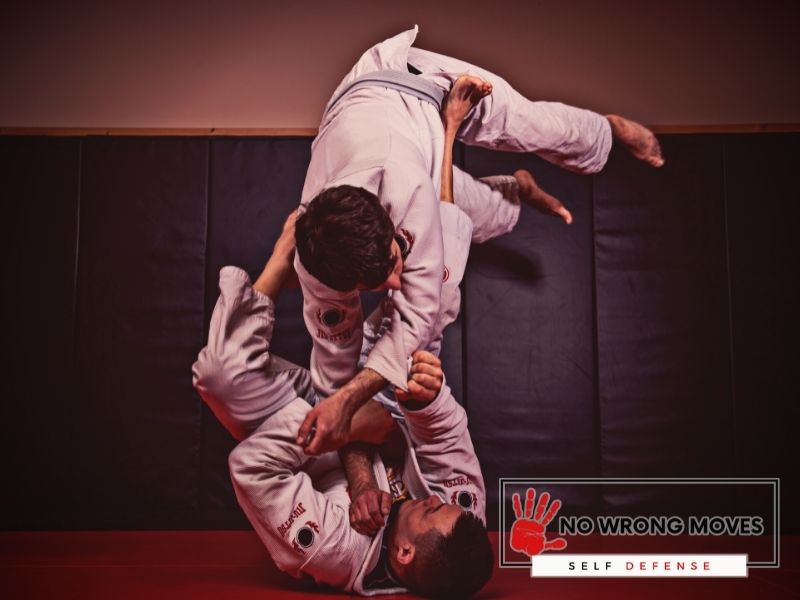
Aiki Jujutsu has its own ranking system, as you've likely already expected. It starts with the 10th Kyu white belt, which represents the beginner level. As one progresses, they move up the ranking system by earning colored belts and stripes.
The ranking system is divided into two categories: kyu and dan. Kyu represents the colored belts that one earns before reaching the black belt level. Dan represents the black belt levels.
The colored belt levels range from 9th Kyu white belt with a yellow stripe, all the way to 4th Kyu purple belt.
The amount of training required to earn these belts is pretty significant, in my opinion. IT ranges from 2 to 3 months, such as for the 9th Kyu white belt with a yellow stripe, to 15 to 21 months, like for the 4th Kyu purple belt.
The black belt levels start with the Shodan-Ho (Junior Black Belt) and progress to the highest level, which is the Godan (5th Degree Black Belt).
If you ask me, it's definitely not an easy feat to achieve: it normally takes years of dedication and training to reach the highest levels of the black belt ranking system.
If this is all a bit hard to visualize, don't worry; I've made a more detailed breakdown for you to see below:
| Rank | Color |
| 10th Kyu | White |
| 9th Kyu | White |
| 8th Kyu | Yellow |
| 7th Kyu | Blue |
| 6th Kyu | Green |
| 5th Kyu | Green |
| 4th Kyu | Purple |
| 3rd Kyu | Brown |
| 2nd Kyu | Brown |
| 1st Kyu | Brown |
| Shodan-Ho | Black |
| Shodan | Black |
| Nidan | Black |
| Sandan | Black |
| Yondan | Black |
| Godan | Black |
Jujutsu Rankings & Levels
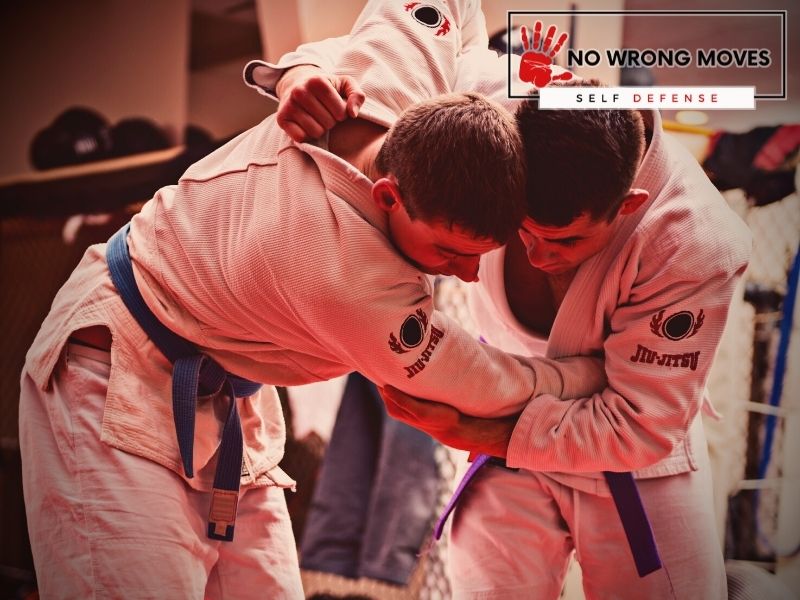
In Jujutsu, the white belt is the first belt a practitioner will earn. This rank is given to anyone new to the art and has no prerequisites.
Many instructors believe that a white belt's training should emphasize escapes and defensive positioning, as white belts often find themselves in inferior positions when training with more experienced practitioners... which is to be expected, of course, but it's a good point nonetheless.
Moving up in the ranks, the blue belt is the second adult rank in Jujutsu. At this level, students gain a wide breadth of technical knowledge and undergo hundreds of hours of mat time to learn how to implement moves efficiently.
Practitioners must typically be at least 16 years old to receive a blue belt, officially entering them into the adult belt system.
The purple belt is the intermediate adult ranking in Jujutsu and requires a minimum of 1.5 years to achieve.
Unlike other martial arts, where students with similar experience are often ranked as a black belt, in Jujutsu, purple belt is still considered an intermediate level.
The brown belt is the highest-ranking color belt in Jujutsu, requiring a minimum of five years of dedicated training to achieve. It's typically required that students be at least 18 years old and recommends spending a minimum of 18 months as a purple belt to be eligible for a brown belt.
Finally, the black belt is the highest common belt in Jujutsu, denoting an expert level of technical and practical skill. Generally, a practitioner must remain a black belt for a minimum of three years.
Students must normally be at least 19 years old and have a minimum of one year ranked as a brown belt to be eligible for a black belt.
Aiki Jujutsu Vs. Jujutsu Attire
This section simply compares the clothing and uniforms that practitioners wear in combat.
Aiki Jujutsu Attire:
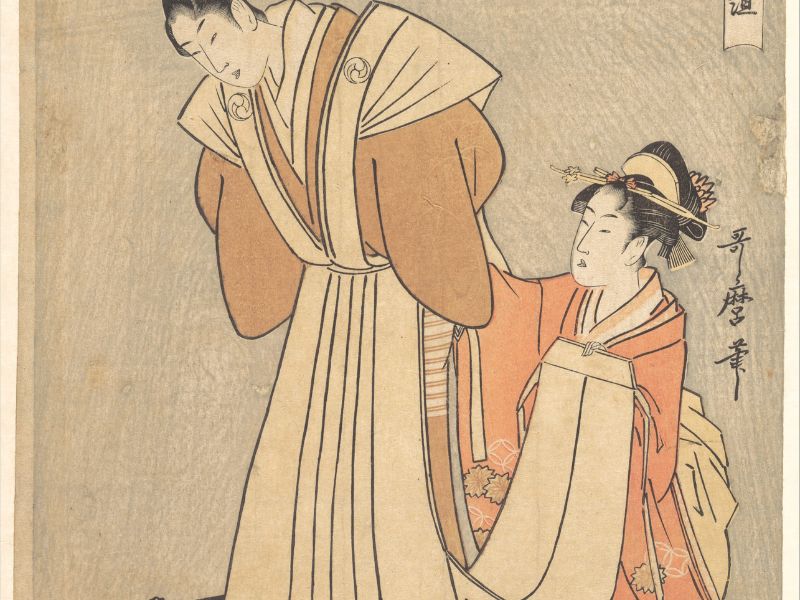
In terms of attire, Aiki Jujutsu practitioners typically wear a traditional dogi and hakama. This affords them better gripping and movement during techniques.
Jujutsu Attire:
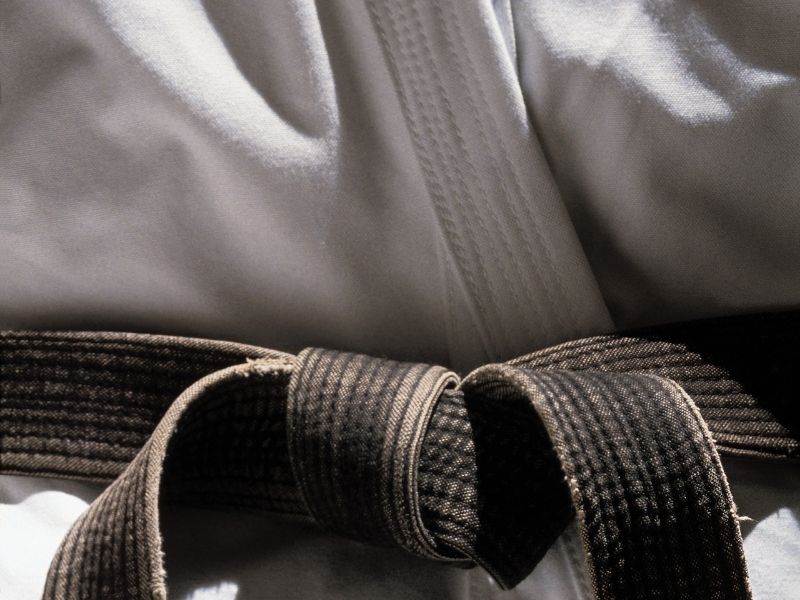
Traditional jujutsu uniforms are made of a heavy cloth called a "bokuden", which is resistant to cuts and slashes. This type of uniform was originally designed for samurai who had to practice in full armor.
Today, most jujutsu practitioners wear a lightweight cotton kimono, although some do still train in the traditional uniform.
What A Typical Aiki Jujutsu Training Session Looks Like
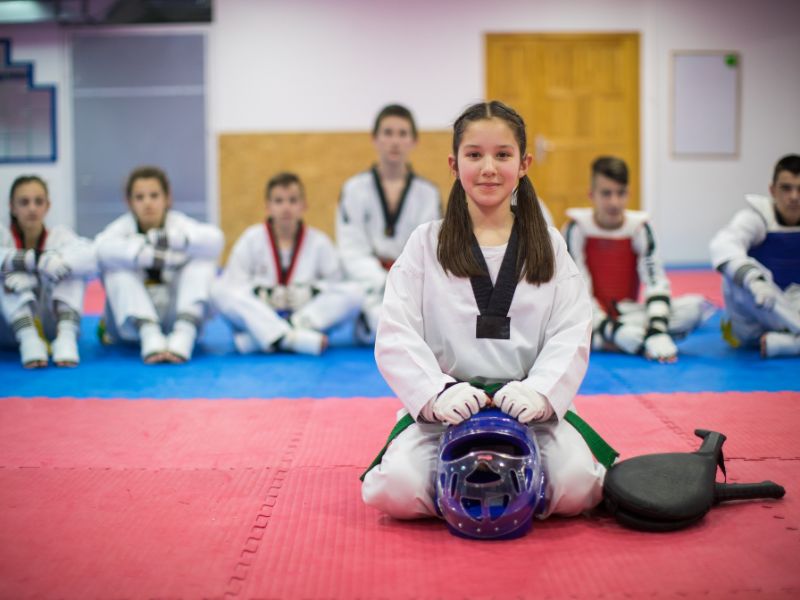
A typical Aiki Jujutsu practice session may start with a few minutes of warm-ups, such as joint rotations and light stretches. This is followed by practicing techniques, which may include throws, locks, and pins. The session usually ends with some relaxation exercises and a cool-down.
One of the most commonly used techniques in Aiki Jujutsu is the wristlock. This involves controlling an opponent's wrist and using their own momentum to throw them off balance.
In addition to physical technique, Aiki Jujutsu also emphasizes mental and spiritual development. This includes cultivating a strong mind-body connection and developing qualities such as patience and awareness.
What A Typical Jujutsu Training Session Looks Like
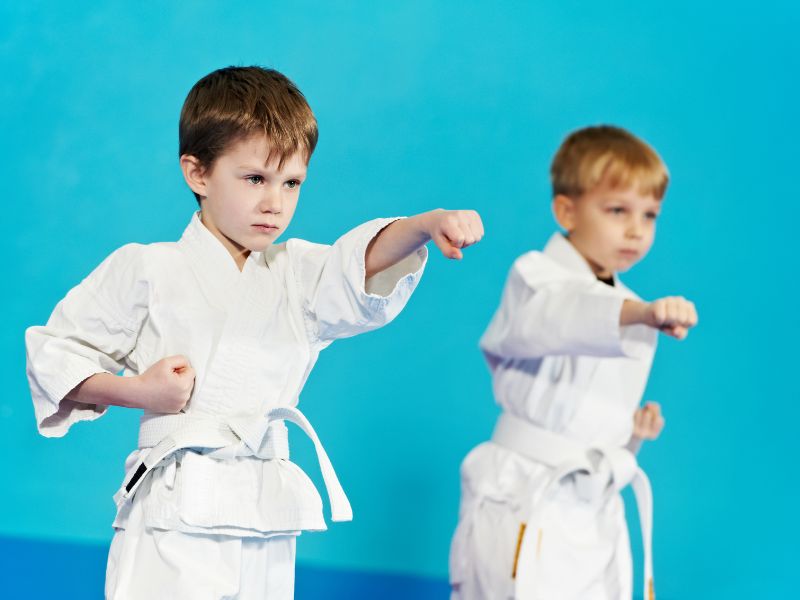
Most jujutsu classes will begin with a series of warm-up exercises. These exercises are designed to increase your heart rate and to loosen up your muscles. The warm-up exercises may include running, jumping, or other cardiovascular activities.
After the warm-up exercises, the class will move on to technique training. During this part of the class, you will learn various jujutsu techniques, such as throws, joint locks, and strikes. The instructor will demonstrate the technique and then the students will practice it with a partner.
Once you have learned some basic techniques, you will have the opportunity to spar with other students in the class.
Sparring is a great way to test your skills and to see how well you can apply the techniques you have learned. Remember that sparring is not a competition; it's an opportunity to practice in a safe and controlled environment.
In addition to learning techniques, you will also learn how to defend yourself in real-world situations.
The self-defense training will cover topics such as awareness, verbal de-escalation, and physical self-defense. This part of the class is designed to give you the skills you need to protect yourself in any situation.
At the end of the class, there will be a series of cool-down exercises. These exercises are designed to help your body recover from the strenuous activity of the class and to prevent injuries. The cool-down exercises may include stretching or light calisthenics
If the last few sections have been a bit full-on or a bit too technical, you will like this next section! Why? Because who doesn't love a good martial arts flick?
Both Aiki Jujutsu and Jujutsu have been featured in a number of films and TV shows, so if you want to learn more about them, then entertain yourself with the following 👊
Aiki Jujutsu Movies

These are some of the top movies and shows with Aiki Jujutsu in them:
- The Bourne Identity (2002)
- Kill Bill: Volume 1 (2003)
- Arrow (TV series, 2012-2020)
- John Wick (2014)
- 13 Assassins (2010)
- The Raid (2011)
Next up, some of the best movies with Jujutsu in them are:
- The Three Ninjas (1992)
- Kill Bill: Volume 1 (2003)
- The Matrix Reloaded (2003)
- 13 Assassins (2010)
- The Bourne Legacy (2012)
Conclusion: Aiki Jujutsu Vs. Jujutsu
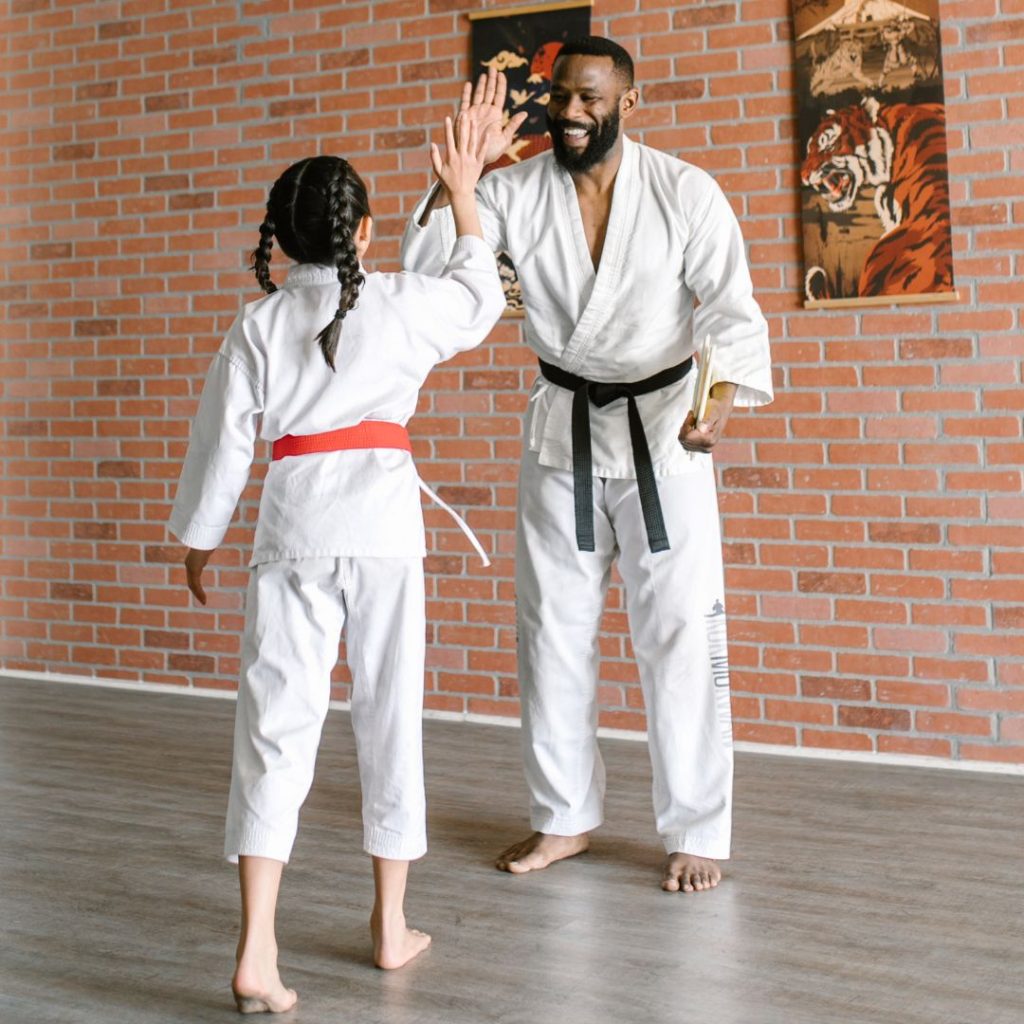
I hope you now have a deeper understanding of Aiki Jujutsu and Jujutsu. In all truth, it is not about which discipline is "better" as they each have their pros and cons.
If you do plan on starting classes for either, please check out my other related posts, as I have tried my best to answer all the FAQs related to the art.
Feel free to share this post and any graphics you like, and of course, if you have any questions or thoughts, drop them below or shoot me an email, and I will be happy to assist 🙂
[author-box-jpx-fitness]
